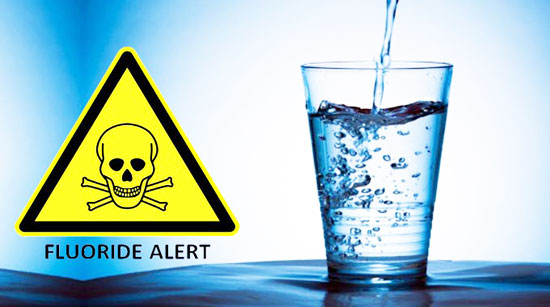Fluoride In Drinking Water Connected With 7-Point Decrease In IQ
A study released in the world’s oldest and best known medical journals reveals that consuming fluoride, even in tiny quantities, causes a 7-point decrease in a person’s IQ.

The study in The Lancet Neurology, lists all of the chemicals that researchers say causes a “global, silent pandemic of neurodevelopmental toxicity.” Seventh on the list, is fluoride.
Forbes.com reports: “The greatest concern is the large numbers of children who are affected by toxic damage to brain development in the absence of a formal diagnosis,” said study author Philippe Grandjean, of the Harvard School of Public Health. “They suffer reduced attention span, delayed development, and poor school performance. Industrial chemicals are now emerging as likely causes.”
Neurobehavioral problems, like autism, ADHD, and dyslexia, affect about 10-15% of kids born today, the authors say. Genes play a large role in some of these disorders – but not that large. Only about 30-40% of the cases of the disorders can be accounted for by genes alone, so environment must make up the other part. Outlining those compounds can be difficult, but the research is mounting, and pointing to a growing list of chemicals that we should avoid.
Because of the frequency with which these chemicals are present in our everyday lives – even banned ones – and the rising rates of developmental disorders in children, the authors say that urgent change should take place: “A new framework of action is needed.”
Here are the 11 chemicals for which there is strong evidence of connection to neurodevelopmental disorders in children:
Lead –This is one of the most extensively researched compounds in terms of neurodevelopment, and has been consistently linked to serious deficits, including low IQ. Its effects seem to be permanent, leading to the conclusion that there is no safe level of exposure.
Methylmercury – Affecting the neurological development of the fetus, exposure often comes from maternal intake of fish containing high levels of mercury, according to the World Health Organization and the EPA.
Polychlorinated biphenyls (PCB) – This family of chemicals has routinely been associated with reduced cognitive function in infancy and childhood. It is often present in foods, particularly fish, and can be passed along in breast milk.
Arsenic – When absorbed through drinking water, this chemical has been linked to reduced cognitive function in schoolchildren. Follow-up studies from the Morinaga milk poisoning incident have linked it to neurological disease in adulthood.
Toluene – Used as a solvent, maternal exposure has been linked to brain development problems and attention deficit in the child, according to the EPA and OSHA.
Manganese – In the drinking water in Bangladesh, for example, this chemical has been linked to lower scores in math, diminished intellectual function, and ADHD.
Fluoride – Higher levels of this chemical has been connected with a 7-point decrease in IQ in children.
Chlorpyrifos and DDT (pesticides) – Linked to structural abnormalities of the brain and neurodevelopmental problems that persist up to age 7. These pesticides are banned in many parts of the world (U.S. included), but still used in many lower-income countries. They have been linked to Alzheimer’s disease as well.
Tetrachloroethylene (AKA perchlorethylene) – These solvents have been linked to hyperactivity and aggressive behavior, and increased risk of psychiatric diagnosis. Mothers in certain professional roles, like nurse, chemist, cleaner, hairdresser, and beautician had higher levels of exposure.
The polybrominateddiphenyl ethers – These flame retardants are banned now, but believed to be neurotoxins. Prenatal exposure has been linked to neurodevelopmental disorders in the child.
Two more compounds of concern are bisphenolA (BPA), a common plastics additive, and phthalate, found in many cosmetics. BPA is an endocrine (hormone) disruptor, and, strongly suspected to affect neurodevelopment in children, it has been banned in baby bottles and sippy cups. Phthalates, which are common in personal products like nail polish and hair spray, have been routinely linked to shortened attention span and impaired social interactions in children.
The developing human brain is incredibly vulnerable to chemical exposures, both in utero and in early childhood, and these changes can be lifelong. “During these sensitive life stages,” say the authors, “chemicals can cause permanent brain injury at low levels of exposure that would have little or no adverse effect in an adult.”
The neurotoxin “pandemic” is disturbing enough that the authors strongly recommend having mandatory tests for chemicals, which many have been arguing for years. One common complaint has been that when one compound does finally become banned, another equally toxic and often untested chemical may take its place. More rigorous testing, though complicated to carry out, might address this major issue.
“The problem is international in scope,” says Grandjean, “and the solution must therefore also be international. We have the methods in place to test industrial chemicals for harmful effects on children’s brain development – now is the time to make that testing mandatory.”
Avoiding these chemicals can be difficult, because they are so prevalent, and present in food, cosmetics, receipt papers, and containers. But reading labels and avoiding certain products is a start.
yogaesoteric
July 28, 2019
Also available in:
 Français
Français
